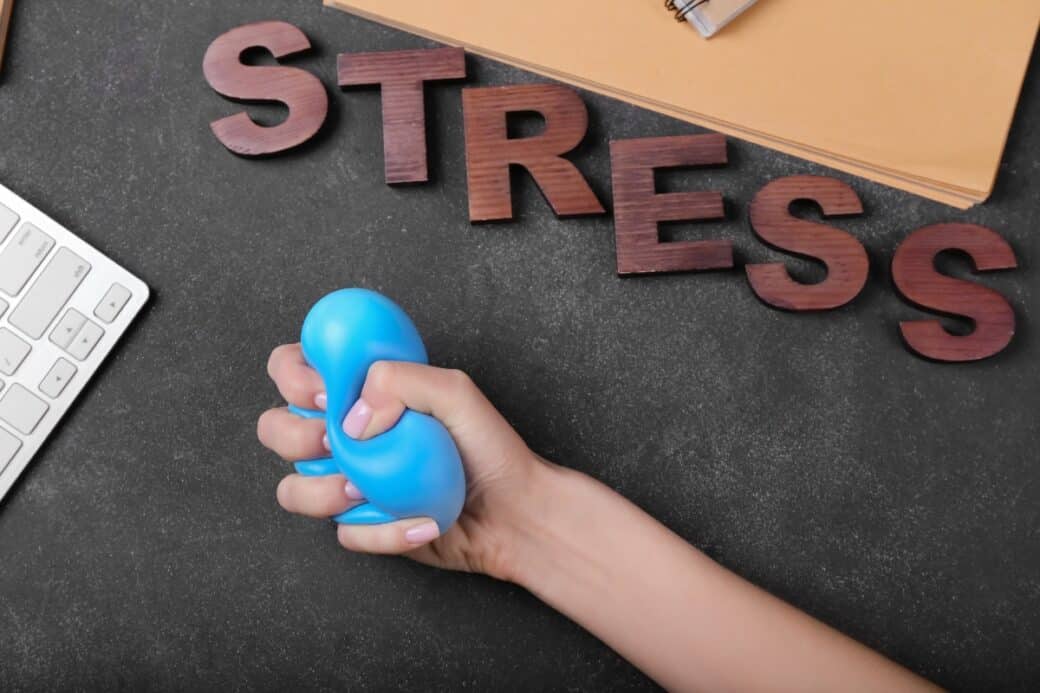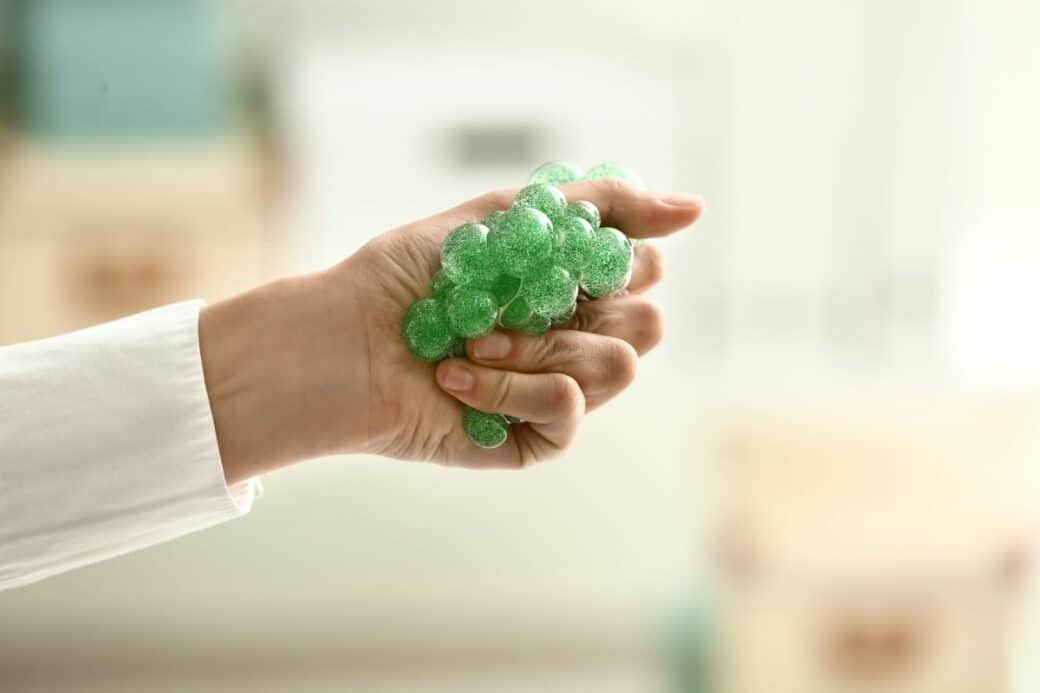In today’s fast-paced world, it’s not uncommon to experience stress and anxiety regularly. That’s where stress balls come in. You might have seen these small, squishy balls in offices, classrooms, or even in the hands of your friends. But have you ever wondered why they help with stress relief? It turns out that there is a scientific explanation behind the effectiveness of these little gadgets. By providing a tactile and repetitive action, stress balls activate the body’s relaxation response, helping to reduce muscle tension and promote a sense of calm. So, the next time you find yourself feeling overwhelmed, reach for a stress ball and squeeze it. You might be surprised at just how much it helps.

Why Do Stress Balls Help: Understanding Stress
Defining stress
Stress is a natural response that occurs when you face a challenging or demanding situation. It can be triggered by various factors, such as work pressure, relationship problems, financial difficulties, or major life changes. When you experience stress, your body releases stress hormones, including cortisol and adrenaline, which prepare you for the “fight or flight” response.
Symptoms of stress
Stress can manifest in both physical and emotional symptoms. Physical symptoms may include headaches, muscle tension, fatigue, digestive issues, and increased heart rate. On the other hand, emotional symptoms may include irritability, mood swings, difficulty concentrating, and changes in appetite or sleep patterns. It’s important to recognize these symptoms to take appropriate measures to manage stress effectively.
Effects of chronic stress on the body
While stress is a natural response, chronic stress can have detrimental effects on your body. Prolonged exposure to stress hormones can lead to an array of health problems, including high blood pressure, weakened immune system, anxiety disorders, depression, and even cardiovascular diseases. Understanding and managing stress is essential for maintaining your overall well-being.
The Theory of Stress and Sensory Processing

Understanding sensory input and processing
Sensory processing refers to how our brains interpret and respond to various sensory inputs from the environment, such as touch, sound, smell, and visual stimuli. Each person has a unique sensory processing style, with some individuals being more sensitive or reactive to certain stimuli than others. Sensory processing plays a significant role in our behavior, emotions, and overall well-being.
Outlining the sensory diet concept
The concept of a “sensory diet” is a therapeutic approach that aims to provide individuals with the right amount and type of sensory input their bodies need to function optimally. Just like a balanced diet for physical nourishment, a sensory diet helps regulate and improve sensory processing, which in turn can have positive effects on emotional regulation, attention, and overall self-regulation.
The connection between sensory processing and stress levels
Research suggests that sensory processing difficulties can contribute to elevated stress levels. When individuals struggle to process and integrate sensory information effectively, they may experience increased anxiety, irritability, and difficulty in adapting to different environments. Understanding the connection between sensory processing and stress can lead to effective strategies for stress management.
Exploring the Concept of Stress Balls
Genesis of stress balls
Stress balls have been used for centuries as a tool for stress relief and relaxation. The origin of stress balls can be traced back to ancient civilizations, where objects such as stones, seeds, or pouches filled with herbs were squeezed or manipulated to relieve tension. Over time, stress balls evolved into the soft, pliable objects we know today.
Various types of stress balls are available
Stress balls come in different shapes, sizes, and materials, providing a wide range of options to suit individual preferences. Some common types include foam balls, gel-filled balls, and even those made from natural materials like rice or sand. Each type offers a unique tactile experience, allowing users to find the one that best suits their needs.
Common uses of stress balls
Stress balls are primarily used as a stress-relieving tool, offering a physical outlet for pent-up emotions and tension. Squeezing or manipulating a stress ball engages the muscles in your hands, promoting relaxation and reducing muscle tension. Beyond stress relief, stress balls are also utilized for improving focus, and concentration, and as a sensory tool in therapy or educational settings.
Scientific Explanation of Stress Ball Benefits
Chemical changes in the brain with stress ball use
Research suggests that using stress balls can trigger the release of endorphins, natural chemicals in the brain that promote feelings of happiness and well-being. These endorphins act as natural pain relievers and mood enhancers, helping to counteract the effects of stress hormones. The physical act of squeezing a stress ball can stimulate the brain’s reward system, leading to a positive emotional response.
Release of muscle tension
One of the key benefits of stress ball use is the release of muscle tension. When you squeeze a stress ball, it activates the muscles in your hands, wrists, and forearms. This muscle engagement not only offers a physical release of tension but also encourages relaxation throughout the body. Regular use of stress balls can help relieve muscle stiffness and promote a sense of calmness.
Improvement in focus and concentration
Manipulating a stress ball can help improve focus and concentration. The repetitive and rhythmic movements involved in squeezing and releasing the stress ball can have a calming effect on the mind, allowing you to redirect your attention and enhance concentration. This can be particularly beneficial when feeling overwhelmed or distracted in various settings, such as at work, school, or during periods of high stress.
Stress Balls and the Theory of Self-regulation
Understanding the self-regulation concept
Self-regulation refers to the ability to control and manage one’s emotions, behavior, and cognitive processes in response to different situations. It involves recognizing and modulating one’s own emotional and physiological responses to maintain a state of balance and well-being. Self-regulation skills are crucial in effectively managing stress and adapting to challenging circumstances.
How stress balls facilitate self-regulation
Stress balls can be helpful tools in facilitating self-regulation. By providing a physical outlet for stress and anxiety, stress balls allow individuals to regulate their emotions and physiological responses. The act of squeezing a stress ball can serve as a grounding technique, allowing users to focus their attention on the present moment and find a sense of control and calmness amidst stressors.
Implications on overall well-being
Developing self-regulation skills through stress ball use can have a positive impact on overall well-being. By learning to regulate emotional responses, individuals can reduce the negative impact of stress on their physical and mental health. This enhanced self-regulation can lead to improved resilience, better coping mechanisms, and a greater sense of self-control in various aspects of life.
Role of Stress Balls in Emotional Processing
The link between physical activity and emotional well-being
Engaging in physical activities has been shown to have a positive impact on emotional well-being. Exercise and movement release endorphins, which can enhance mood and reduce stress. Similarly, the kinesthetic nature of stress ball use provides a form of physical activity that can aid in emotional processing and regulation.
Stress balls and emotional release
Stress balls offer a safe and accessible means of emotional release. Squeezing, pounding, or manipulating a stress ball can provide a cathartic outlet for expressing pent-up emotions, frustrations, or anxiety. This physical manifestation of emotional energy can help individuals release tension, gain a sense of relief, and promote emotional self-awareness and regulation.
Utilization of stress balls in therapy
Stress balls are commonly utilized as therapeutic tools in various therapeutic settings. Mental health professionals often recommend stress balls as an adjunct tool for individuals coping with anxiety, trauma, or stress-related disorders. The tactile stimulation and physicality of stress balls can support the therapeutic process, facilitating emotional expression, and promoting relaxation.
Neurobiological Aspects of Stress Ball Use
Impact on the nervous system
Using stress balls has been found to have an impact on the nervous system. The physical act of squeezing a stress ball activates the proprioceptive system, which provides feedback about body position and movement. This proprioceptive input can help regulate the autonomic nervous system, reducing the activation of the stress response and promoting a relaxation response.
Alterations in brain patterns
Studies have shown that using stress balls can lead to alterations in brain patterns. Brain imaging techniques, such as functional magnetic resonance imaging (fMRI), have demonstrated changes in brain activity and connectivity after stress ball use. These alterations indicate a shift towards a more relaxed state, with decreased activity in the areas associated with stress and increased activity in regions linked to relaxation and emotional regulation.
Neurochemical alterations due to stress ball use
The use of stress balls has also been shown to lead to neurochemical alterations in the brain. Research suggests that stress ball use can increase the production and release of neurotransmitters such as dopamine and serotonin, which play crucial roles in regulating mood, happiness, and overall well-being. These neurochemical changes contribute to the stress-relieving effects associated with stress ball use.
Popularity and Widespread Use of Stress Balls
Stress balls in the workplace
Stress balls have gained popularity in the workplace as a tool for stress management. Many professionals find them effective in relieving work-related stress and improving productivity. The discreet nature of stress balls allows individuals to use them during meetings, at their desks, or during breaks, providing a convenient and accessible means of stress relief throughout the workday.
Use in educational institutions
Stress balls have also found their way into educational institutions as a tool for students to manage stress and enhance focus. Many students find stress balls helpful during exams, presentations, or when feeling overwhelmed. The tactile sensation and repetitive movements of stress ball use can promote a sense of calmness and concentration, aiding in academic performance and stress reduction.
Therapeutic applications and use in clinical settings
In clinical settings, stress balls are widely used as therapeutic aids. Mental health professionals incorporate stress balls into therapy sessions as a way to promote relaxation, emotional expression, and self-regulation. Stress balls can be particularly beneficial for individuals with anxiety disorders, trauma, or those undergoing therapeutic processes that require physical grounding and stress reduction techniques.
Practical tips for using Stress Balls
Choosing the right stress ball
When selecting a stress ball, consider the material, texture, and size that best suits your preferences. Some people prefer soft foam stress balls for their squeezability, while others may find gel-filled or textured stress balls more satisfying. Experimenting with different options can help you find the stress ball that feels most comfortable and effective for you.
Ideal duration and frequency of use
The duration and frequency of stress ball use can vary depending on individual needs and preferences. It’s important to use stress balls in a way that feels helpful and not excessive. Short, focused sessions of 5-10 minutes multiple times a day can be beneficial in managing stress and promoting relaxation. You can adjust the duration and frequency according to your own comfort and response.
Combining stress ball use with other stress management techniques
While stress balls can be effective stress-relieving tools on their own, combining their use with other stress management techniques can maximize their benefits. Practicing deep breathing exercises, mindfulness, or engaging in physical activities like yoga or meditation can complement stress ball use, creating a comprehensive stress management routine.
Criticisms and Limitations of Stress Ball Use
Potential side effects
Although stress balls are generally safe, excessive or improper use may cause temporary discomfort or muscle strain. It’s important to use stress balls without exerting excessive force or causing pain. If you experience any discomfort or pain during stress ball use, it’s recommended to consult with a healthcare professional.
Studies questioning efficacy
While stress balls have gained popularity and demonstrated anecdotal effectiveness, some studies question their overall efficacy as standalone stress relief tools. Further research is needed to explore the specific mechanisms through which stress balls provide relief and to determine the extent of their effectiveness in different populations and circumstances.
Comparative analysis with other stress relief tools
There are various stress relief tools available, such as fidget toys, mindfulness exercises, or relaxation techniques. It’s important to note that stress balls may work better for some individuals compared to others. Exploring and trying different stress relief tools can help individuals find the most effective strategies for stress management that suit their unique needs and preferences.
In conclusion, stress balls have a long history as a stress-relieving tool, and their benefits can be attributed to various psychological and neurobiological mechanisms. They provide a tangible outlet for stress and tension, promoting relaxation, and muscle release, and enhancing focus and concentration. Through their role in self-regulation and emotional processing, stress balls can positively impact overall well-being. However, it’s essential to utilize stress balls in conjunction with other stress management techniques and be aware of potential limitations or individual differences in their effectiveness. With the right approach and understanding, stress balls can be valuable allies in managing stress and promoting a healthier lifestyle.




